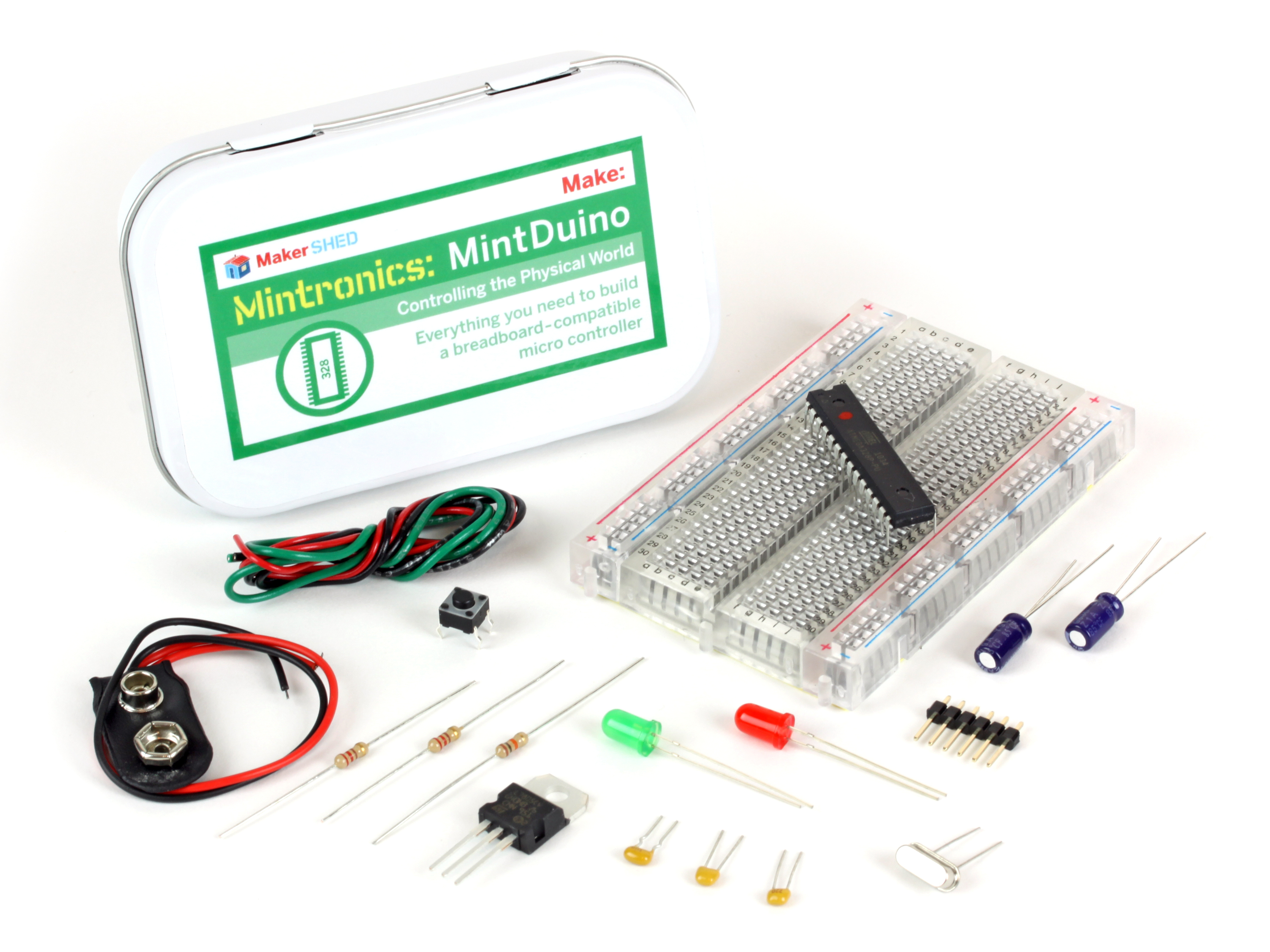The MintDuino is perfect for anyone interested in learning (or teaching) the fundamentals of how microcontrollers work. It will have you building your own microcontroller from scratch on a breadboard, and then easily programming it from almost any computer via the Arduino programming environment.
Unlike pre-built microcontrollers, the MintDuino demonstrates the specific relationship between the wires, resistors, capacitors, and integrated circuits that enables you to program the microcontroller from your computer. After building the MintDuino, you’ll have a much better understanding of how microcontrollers work, and how electronics can interact with the physical world.



